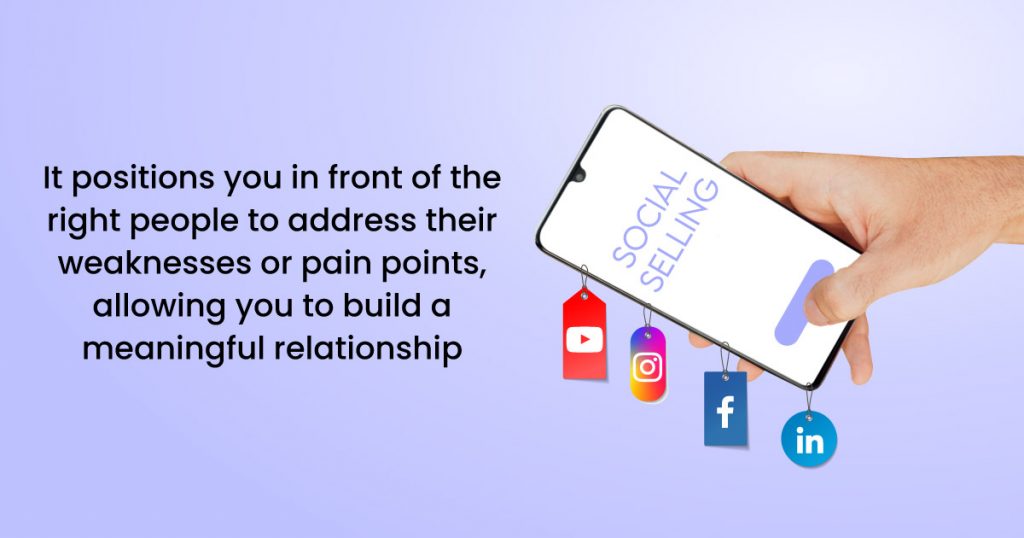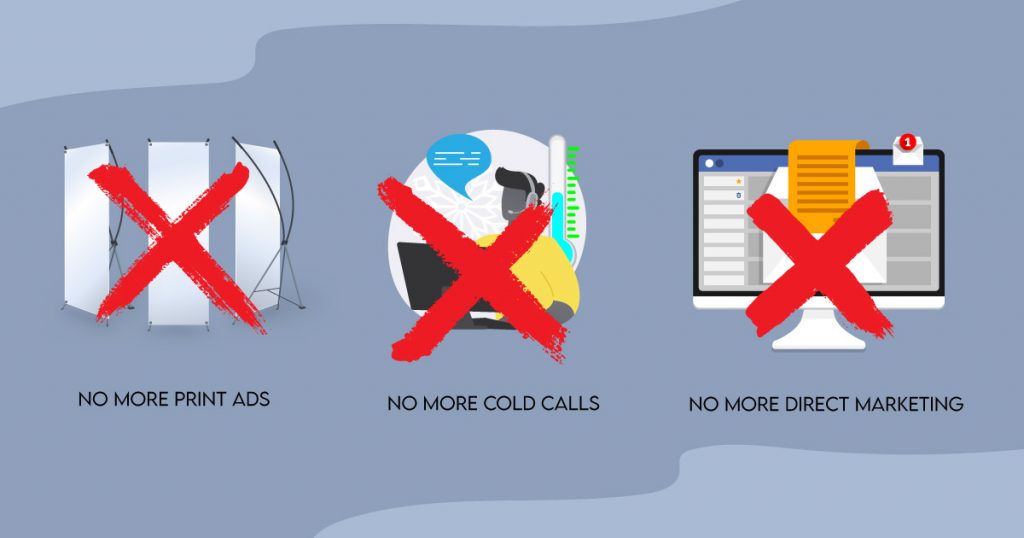10 years ago, getting new leads for marketers meant visiting malls, exhibitions, and even knocking on people’s doors. The struggle to get new customers was desperate, and it seemed like the new age of business was still far from being established.
Today, things are drastically different.

We now live in the social networking age, where businesses take advantage of social media to spread the marketing message to millions of people.
And social media has truly come out of its cocoon. It is now so much than just another medium for communication.

As per Statista, almost 50% of the global population is active on social media today. This statistic opens a wonderful opportunity for C-level executive, start-ups, and entrepreneurs to develop their brand’s identity, boost sales, and increase market share more cost-effectively.
This is where social selling comes into play.
The Definition of Social Selling
Koka Sexton, the global Senior Manager of LinkedIn, defines social selling in the following way:
Social selling is when companies, brands, and leaders talk to you, not at you. It is when they share their insight and expertise with you, in an authentic and trustworthy way, with the goal of helping each person stand out in a better way.
It takes your professional brand to a newer height to move away from an offline-only impression to a more dynamic online presence. It positions you in front of the right people to address their weaknesses or pain points, allowing you to build a meaningful relationship.

The Benefits of Social Selling
Your audience utilizes social media to gather information before buying a product or service.
* Your presence in social media is actually valuable. Almost 81% of buyers connect with a brand who has a strong and active presence on social media.
* More than 72% of buyers utilize social media for product research before making a purchase. They usually look for product reviews and social proof before buying.
Source: LinkedIn Global Survey
1. Social selling enables you to build a relationship with multiple decision makers.
Gone are the days when the marketing process ends with a single business-to-business buyer.
With social selling, a company can now build a relationship with different market segments, from sales executives to key decision makers. This is possible because most business people have their personal profiles on social media.
For instance, you are trying to network with investment companies thru LinkedIn. A search for investment professionals reveals information on their professional profile. They are available on LinkedIn, which is practically their virtual office since they constantly share news about investment firms.
Apart from professional pages, there are also key decision-makers that you can follow for business intelligence. They might be the CEO, other key executives, or board members you can reach out to directly.
2. Social selling allows you to impact buyer's decision.
The central question is not whether or not a business can make a sale but how many sales it will be able to make if the company’s social strategy is optimized.
In other words, you can influence the buyer’s decision.
Most people usually look at social media to support other people or check out what other people are saying. For example, if you are searching for a dentist on Google, the first page of search results includes other people’s reviews on local dentists, whether they are satisfied on the service or not.
What you can do is use social media to provide genuine, credible, and useful information about your business. You might want to educate them on why your dental service is significant or give insights on your specialization.
This way, you are doing a good job of convincing your target audience to include you on their list of preferred options.
Social Media Marketing Vs. Social Selling
One of the biggest misconceptions about social selling is, it is the same with social media marketing.
Wrong.
In fact, they are two different approaches with different ‘persuading’ formulas. Social selling seeks connections, not transactions. It aims to create thought leadership and not brand benefits. The strategy opts to listen than to speak. It seeks relationships, not sales. Social selling focuses on content sharing rather than content consumption.

How To Proliferate Your Business Through Social Selling?
1. Crack the code of the new market demand.
As a business owner, how will you keep up with the crisis of new developments in the market? It is inevitable. The biggest challenge that businesses are faced with is this fast-paced demand for new products and services. On top of that, pandemic turnarounds and inconsistent market conditions can make it difficult to sell or market your products and services.
Hence, you see that the key for any business is to seize hold of the market demand at all times. You need to know the changes in consumer behavior online and offline.
Social selling is the new way for sellers and marketers to make a big impact in their campaigns. If you are a retailer, don’t just talk about the product, talk about the lifestyle it can bring.
Your prospect will naturally feel more comfortable if they can relate to you.
2. Avoid the 'sales-y' pitch.
Be a thought leader. Rather than just selling your products and services to your prospects, share valuable insights about your business. Be a business expert.
No one’s going to buy your products if you are too pushy. Today’s consumers are too smart. If they think that you are just trying to sell to them, they will immediately get turned off. They are also tech savvy. They can easily tell if you are just broadcasting your business message. So, make sure that you are not ‘sales-y’ at all. It is very important to be genuine and show your personality instead.
Be a thought leader in your industry.
Contribute to the online conversation about your industry.
3. Be consistent.
In marketing anyway, consistency is key. If you are going to send a message to your social media followers, make sure that you send it in a timely manner after your messages were delivered. When you are consistent, your prospect will naturally build trust in you because they think they can rely on you.
If properly executed, social selling can be a win-win situation for your business and your prospects.
Social selling is not just another marketing strategy. It is an innovative and effective interaction between you and your target audience in the form of a personal relationship.
Plan your social selling strategy accordingly!
Get in Touch
Do you find this article helpful? For more information or questions, click the button to send us a message.
If you have any comments or suggestions, feel free to share them with us, too!

